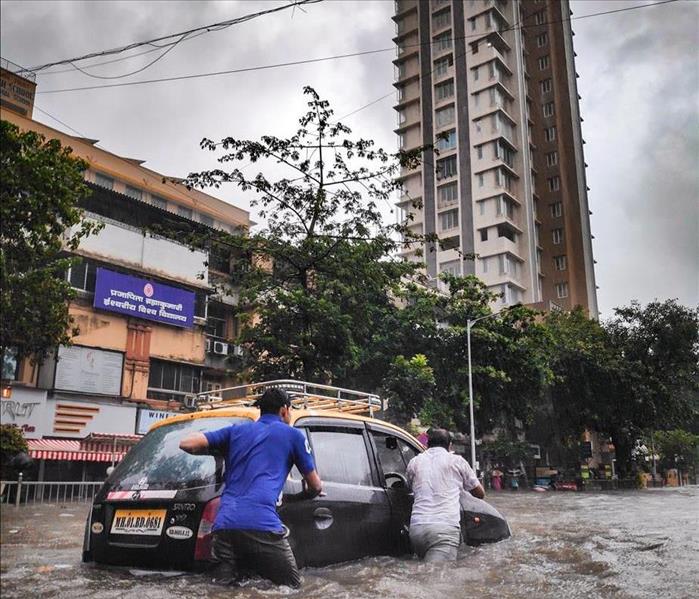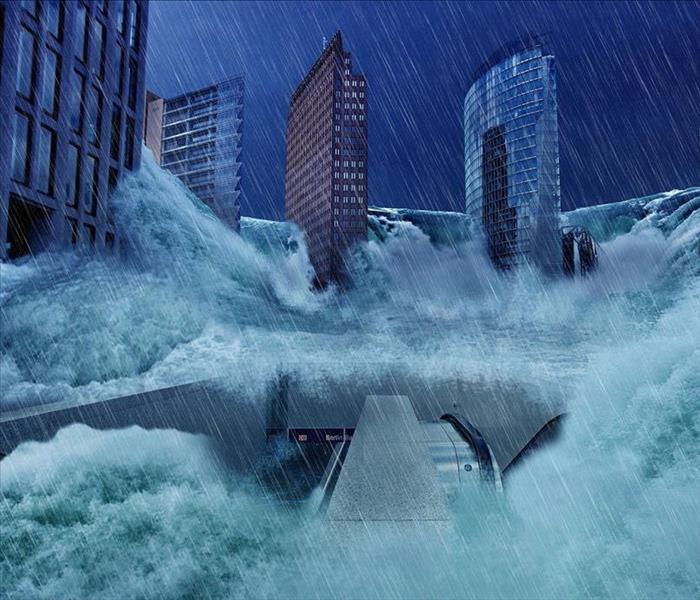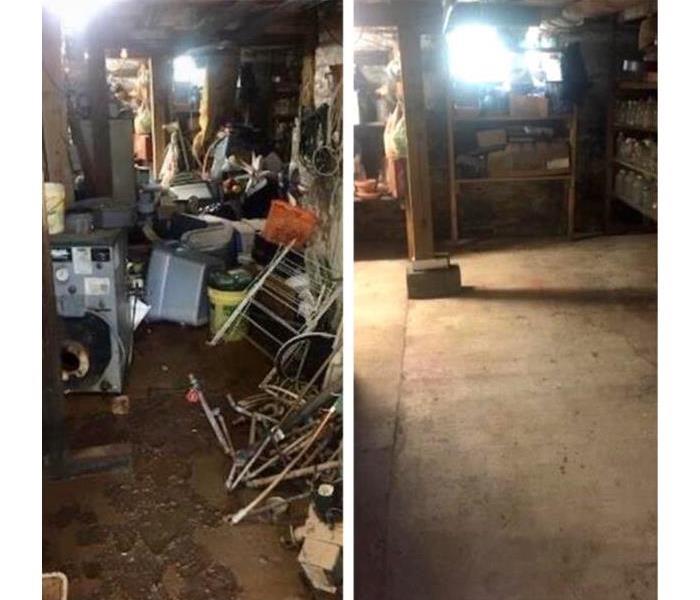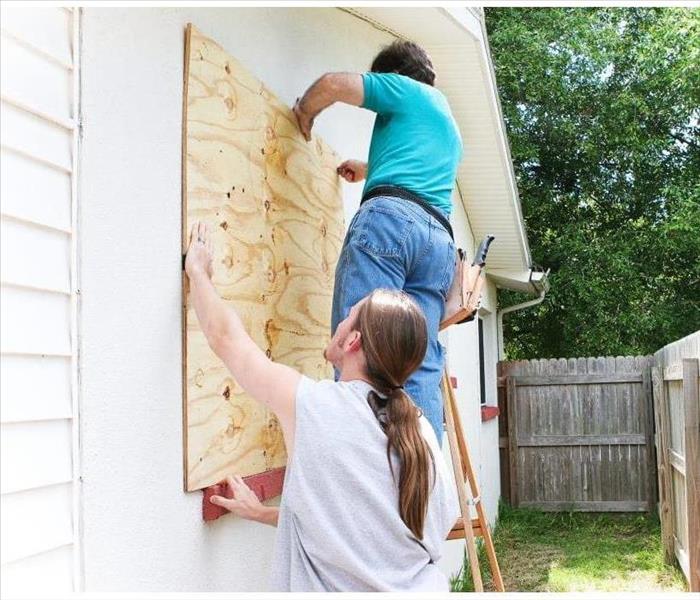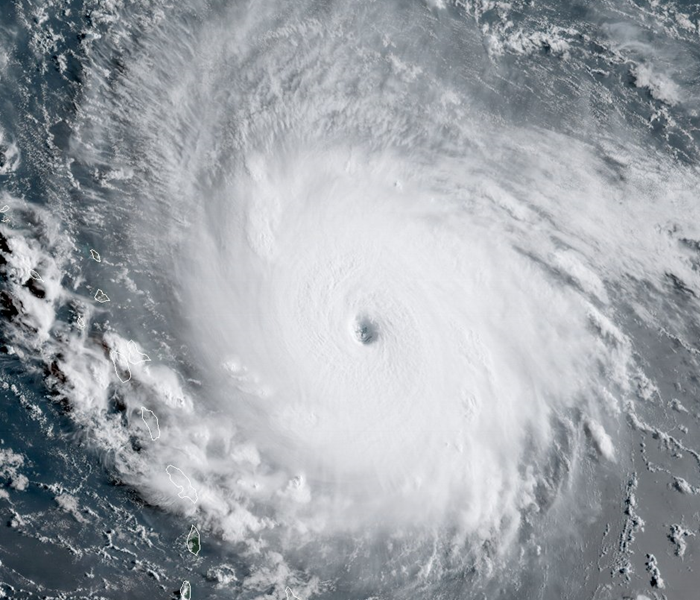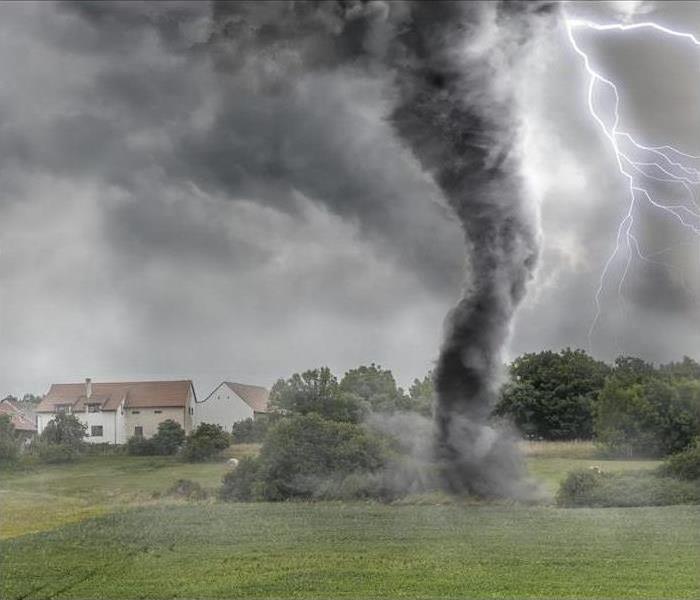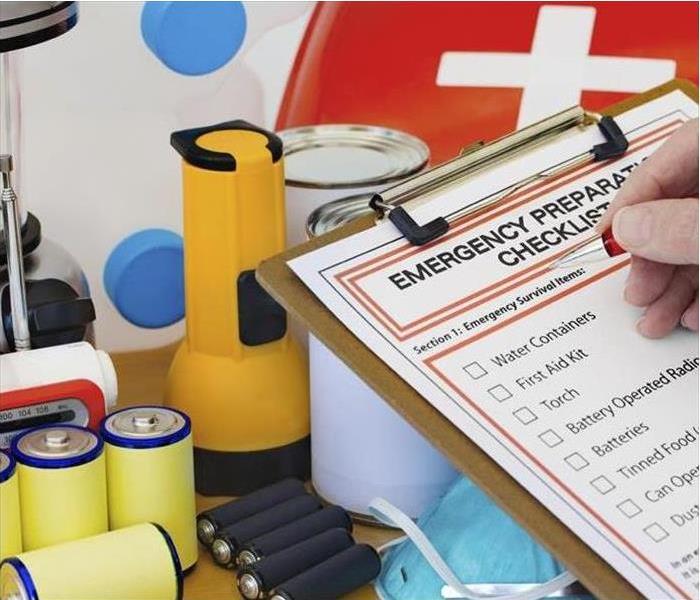Recent Storm Damage Posts
Preparing for Storm Evacuation: Tips for You and Your Pets in Washington, DC
9/8/2023 (Permalink)
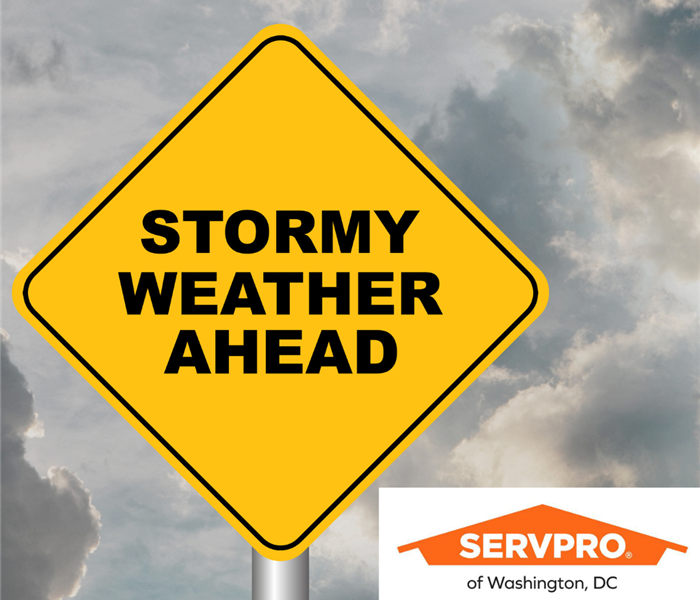 Be prepared for a storm evacuation with these tips.
Be prepared for a storm evacuation with these tips.
SERVPRO of Washington, DC has these tips for people with disabilities in our community during an evacuation
Emergencies and natural disasters can happen unexpectedly, and being prepared is crucial, especially for individuals with disabilities. SERVPRO of Washington, DC is here to provide essential tips for our community members who may require additional assistance during evacuations.
Prepare a Readiness Kit
One of the first steps is to have an emergency kit ready in case you need to evacuate quickly. Your kit should include essential items such as:
- Non-perishable food and water
- Medications, along with a list detailing dosages and allergies
- Medical supplies and equipment, including any necessary batteries
- Personal mobility aids like wheelchairs, canes, or braces
- Medical identification, including bracelets or tags with pertinent information for first responders
- Medical insurance cards
- Written list of emergency contacts
Plan for Transportation
Even if you have your own vehicle, it's essential to plan for backup transportation. Severe weather or flooding may damage your car. Consider accessible transportation options and discuss your needs with your healthcare provider.
Communicate with Your Healthcare Provider
Talk to your healthcare provider about your emergency plans and ask for their recommendations regarding:
- Specific medical devices you might require during an evacuation
- Where to obtain necessary medical supplies
- Accessible transportation options
- Directions to a medical facility in case of emergency
- The availability of disability ramps at medical facilities
Care for Service Animals
Service animals play a crucial role in the lives of many individuals. To ensure their safety during emergencies:
- Pack extra food, water, and supplies for your service animal in your kit
- Inform emergency responders that your service animal is with you
- Be aware that some shelters or buildings may have policies regarding service animal entry
- By following these preparedness guidelines, individuals with disabilities can enhance their safety and well-being during evacuation situations. Remember that planning ahead can make all the difference when facing unexpected emergencies.
For More Information:
To learn more about emergency preparedness for individuals with functional needs, visit Ready.gov's resource page.
At SERVPRO of Washington, DC we are dedicated to helping our community stay safe and informed. If you have any questions or need assistance, please don't hesitate to reach out to us. Your safety is our top priority.
Links:
https://www.ready.gov/individuals-access-functional-needs
Destructive Washington DC Storms
8/22/2022 (Permalink)
Storms can be intense this time of year, sometimes with little warning. Here are some tips to help you in case you find yourself in a storm.
TORNADOES
Tornadoes can strike without warning and destroy a community in seconds. Before a tornado warning is issued for your area, here are some things you should do:
1. Know your community’s warning system.
2. Pick a place where family members can gather if a tornado is headed your way. It could be your basement or, if there is no basement, a center hallway, bathroom, or closet on the lowest floor. Keep this place uncluttered.
3. If you are in a high-rise building and don’t have enough time to go to the lowest floor, pick a place in a hallway in the center of the building.
4. Remove diseased and damaged limbs from trees.
5. Move or secure lawn furniture, trash cans, hanging plants or anything else that can be picked up by the wind and become a projectile.
THUNDERSTORM SAFETY STEPS
Thunderstorms injure an average of 300 people every year, and cause about 80 fatalities. Here are the top thunderstorm safety steps you should follow:
1. If you can hear thunder, you are close enough to the storm to be struck by lightning. Go to safe shelter immediately.
2. As the storm approaches, take shelter in a building.
3. If you are driving, pull off the roadway and park. Stay in the car with the windows closed and turn on the emergency flashers. Avoid touching metal or other surfaces that conduct electricity in and outside of the vehicle.
4. If you are inside, unplug appliances and avoid using the telephone or any electrical appliances. Avoid taking a bath or shower or running water for any other purpose.
5. If you are caught outside and cannot reach a safe building, avoid high ground, water, tall, isolated trees and metal objects such as fences or bleachers. Picnic shelters, dugouts and sheds are not safe.
If you have storm or flood damage hire a professional restoration company. SERVPRO of Washington DC is here to help, we have experienced, trained technicians (202) 737-8776.
Professional Storm Damage Response Can Save You Money
8/2/2022 (Permalink)
 Experienced, Professional, Restoration Response is critical when you have storm or mold damage.
Experienced, Professional, Restoration Response is critical when you have storm or mold damage.
Washington DC Storm Damage Can Lead to a Big Mold Issue
The presence of mold leaves behind an unmistakable musty odor. Although this fungus can develop inside a house when it is simply a little too humid, it is more likely to develop after floodwater damages the premises. When that flooding is accompanied by sewage loss, the contaminants only exacerbate the problem.
Homeowners should try to prevent mold growth entirely. If mold does develop, then you need to address it right away before a bad stench turns into something much worse.
1. Structural Damage
Mold is particularly destructive to certain materials, including gypsum board, plaster and wood. Over time, these materials may weaken and change color. You may not even see the damage if the item is painted, but the paint merely hides the mildew. The only way to ensure your home remains structurally sound is to remove all presence of mold. Certain structures may need to be replaced entirely to make sure your house is safe.
2. Rapid Growth
Mold growth can get out of hand in just 24 hours. It can spread exponentially when exposed to the right conditions. Leaks, condensation and high humidity can accelerate the growth process, causing the mold to overtake entire sections of walls and flooring. Over time, this can lead to toxic black mold.
An even more dangerous aspect is that visible mold is only half the story. If you see mold, then there is a very high likelihood there is even more growing out of sight. You need someone to come out to your place immediately to ensure your house remains mold-free.
When bringing in a professional team to address mold in your home, it is vital that every sign of it is removed. This includes the mold you see on the wall as well as spores that have entered the air.
Without addressing the problem comprehensively, the mold growth will simply resume, sometimes in less than a day.
SERVPRO of Washington, DC has the specific damage restoration training, personnel, and equipment to restore your home or business to its pre-existing state. If you need someone to help you with any fire, soot, or smoke damage, our certified technicians will be there to start the restoration process.
If you have storm damage or suspect mold, SERVPRO of Washington DC (202) 737-8776.
Preparation and Planning for DC Area Storms
4/18/2022 (Permalink)
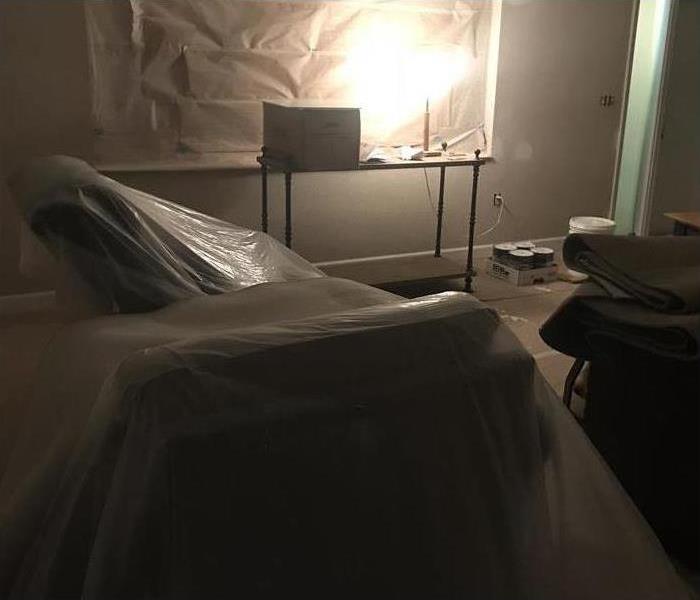 If your Washington DC home or business has storm damage call the experts at SERVPRO of Washington DC (202) 737-8776.
If your Washington DC home or business has storm damage call the experts at SERVPRO of Washington DC (202) 737-8776.
Spring and Summer bring sunshine and warmer weather to the Washington DC area, but also can mean thunderstorms.
According to Ready DC, it is important to know the difference between a thunderstorm WATCH and a thunderstorm WARNING. A severe thunderstorm WATCH means a severe thunderstorm (damaging winds of 58 miles per hour or more, or hail three-fourths of an inch in diameter or greater) is likely to develop. A severe thunderstorm WARNING means that a severe thunderstorm has been sighted or indicated by weather radar.
In Washington DC severe storms can cause downed trees/power lines, flash flooding, lightning-related damage, tornado damage, hail and massive amount of debris on roads.
Ready DC recommends having these items organized before a storm strikes:
Water
One gallon of water per person, per day, for at least three days, to be used for drinking and sanitation
Food
At least a three-day supply of non-perishable food for each member of your family (while non-perishables do last for a long time, you should be regularly checking these supplies to make sure that nothing in your kit is expired)
Battery, solar powered, or hand crank radio and a NOAA Weather Radio with tone alert and extra batteries for each
Flashlight and extra batteries
A whistle to signal for help
Dust mask to help filter contaminated air
Plastic sheeting and duct tape to shelter-in-place
Moist towelettes, garbage bags and plastic ties for personal sanitation
Fire extinguisher
Extra cell phone with batteries/chargers
First aid kit
Prescription medications and eyewear
Emergency reference material such as first aid book
Important documents such as: insurance policies, copy of driver’s license, Social Security card, birth certificate, and bank account records stored in a watertight container
Cash and change
Copies of local maps
A list of emergency contacts with phone numbers
Call The Restoration Professionals SERVPRO of Washington DC
If your Washington DC home or business has storm damage call the experts at SERVPRO of Washington DC (202) 737-8776.
Flooding and water damage is very invasive. Water quickly spreads throughout your home and gets absorbed into floors, walls, furniture, and more.
SERVPRO of Washington DC arrives quickly and starts the water extraction process almost immediately. This immediate response helps to minimize the damage and the cleaning and restoration costs.
Storm Damage and Looking for Mold
3/24/2022 (Permalink)
Stains on your floors can be an indication of water damage.
When it's contained properly, water doesn't pose too big of a threat to your home. The water that is not dried up or that sits causes a cozy environment for mold and mildew to begin growing. Mold is a fast-spreading, hard-to-remove fungus that can weaken your property's structural integrity. Here are several methods for detecting water damage in your house. Walk around and look carefully at both the interior and exterior of your home.
Walk around and Inspect Outside
Carefully look over the entire exterior of your house. Look for pools of water. These can indicate poor drainage in the yard, gutter spouts that maybe aren’t moving water far enough from the house or leaky rain gutters. Any of those issues can threaten your homes foundation since water that’s standing may get into your home.
Make sure to check your roof. The most common signs of water damage to your roof often include pools of water; cracked, curled up or missing shingles.
Inside Check your Floors
No matter what kind of flooring you have throughout your home, if water damage is present the signs will show. For tile and wood floors, look for cracked, buckling or warping. On carpeted floors, be wary of damp spots, stains, gradual rises and soft spots.
Smell your way around
If you see any active mold growth it means that moisture is contacting microscopic mold spores in your home. Since mold often hides, you can’t rely only on your site. If there’s a smell of mold and dampness, then that water damage might be present. Water, when it’s stagnated, causes mold and bacteria can grow, which is what produces the musty, unpleasant smell.
Look for Stains Everywhere
Look for stains on your floors, walls and ceiling. If you find water stains on your floors or around your bathtub, toilet or sink than those are signs of water damage. If you find stains on your ceilings and walls than those too are some of the most obvious signs of water damage. Some of these stains can be concealing mold behind them beneath the flooring or in your walls since water damage that’s left unattended can often lead to mold. Unusual stains may indicate that there is a leaky pipe inside the wall. Perhaps there’s a leaky drain. Cracks in your drywall often mean there’s trouble. If any areas of your walls appear swollen and are soft to touch that too may signify trouble. If pain is peeing that is another sign of water loose within walls. When drywall gets saturated, paint will usually lose adhesion.
Look for Rust and Mold
Frequent Inspections of your water heater can be very beneficial. Checking for rust that’s developing on the tank or if you see rust already present on the tank, that typically indicates a slow leak. Rust around pipe connections can also be caused by water seepage.
If you suspect storm damage but you're not sure where it is, call the experts at SERVPRO of Washington DC (202) 737-8776.
SERVPRO of Washington DC specializes in storm and flood damage restoration. Our crews are highly trained, and we use specialized equipment to restore your property to its pre-storm condition. A fast response lessens the damage, limits further damage, and reduces the restoration cost.
Damaging Storms Can Leave Behind Dangerous Flood Water
3/21/2022 (Permalink)
Washington DC Storm Damage and Understanding What's in Flood Water
Water damage is classified into three categories.
Category One water is clean.
Category Two water, or gray water, is contaminated, but does not contain solid waste.
Category Three water, or black water, is severely contaminated. This water originates from a flood or sewer backup.
Find out more about why it is necessary to disinfect any building materials and contents exposed to Flooding
Contaminants
Category Three water may contain a variety of contaminants. When flooding occurs, surface water may carry any of the following contents:
When a body of surface water overflows or heavy rain accumulates, this water may mingle with overflow from sewer mains.
Water accumulates more contaminants as it flows. For this reason, it is important to extract standing water before cleaning and disinfecting any parts of a commercial structure exposed to this type of water damage.
Protective Equipment
Building occupants should take measures to limit exposure to contaminated water. It may be helpful to keep the following personal protective items on site:
- Goggles or safety glasses
- Watertight boots with electrical insulation
All of these pieces of equipment can be useful if a building occupant needs to move through flood water for any reason. Individuals should factor in the depth and speed of the water when deciding whether to cross.
Cleanup Procedures
There are several stages to cleaning up flooding. A commercial restoration company will extract black water with a pump or other specialized equipment. It may be necessary to tear out damaged building materials. Afterwards, the area should be cleaned, disinfected and dried. Once the area is totally dry, restoration can proceed.
SERVPRO ofWashington DC specializes in storm and flood damage restoration. Our crews are highly trained, and we use specialized equipment to restore your property to its pre-storm condition.
Our highly trained crews are ready to respond 24/7 to storm or flood damage in Washington DC.
If you have questions about storm damage, give us a call, SERVPRO of Washington DC (202) 737-8776.
Winter Storms Lead to Water Damage In Your Home
2/3/2022 (Permalink)
Ice Dams Forming on Washington DC Homes
Ice dams can potentially due damage to both your gutters and roof. It’s critical that you do your part in preventing ice dams.
Ice dams cause water to collect, moving moisture to damage the roof, and soffits on your home. Icicles can also form which adds additional weight which the gutters cannot handle. This can lead to gutters detaching from the roof and causing damage.
Ice dams form when snow on the roof melts and runs into the gutters. It can re-freeze due to the cold temperature of the gutters. This can cause the formation of an ice dam that prevents proper drainage. This can be made worse by gutters that already have a buildup of debris.
Dealing With Water Damage in Your Home
Flooding and stormwater can cause a considerable amount of damage to your home. Water quickly spreads throughout your home and can get absorbed into floors, and walls. If you call SERVPRO of Washington DC, our technicians arrive quickly and start the water extraction process. This immediate response helps to minimize the damage and restoration costs.
If you have water damage caused by storms don't wait call us right away, SERVPRO of Washington DC (202) 737-8776.
With water in your home, you can expect these in the first 24 hours:
Drywall begins to swell and break down.
Metal surfaces begin to tarnish.
Furniture begins to swell and crack.
Dyes and inks from cloth and paper goods spread and stain.
A musty odor appears.
After 48 hours:
Mold and mildew may grow and spread.
It’s worth making a call to SERVPRO of Washington DC, and let our trained, professional crews handle the situation safely.
With More Rain In The Forecast, How Well Is Your Sump Pump Working?
8/23/2021 (Permalink)
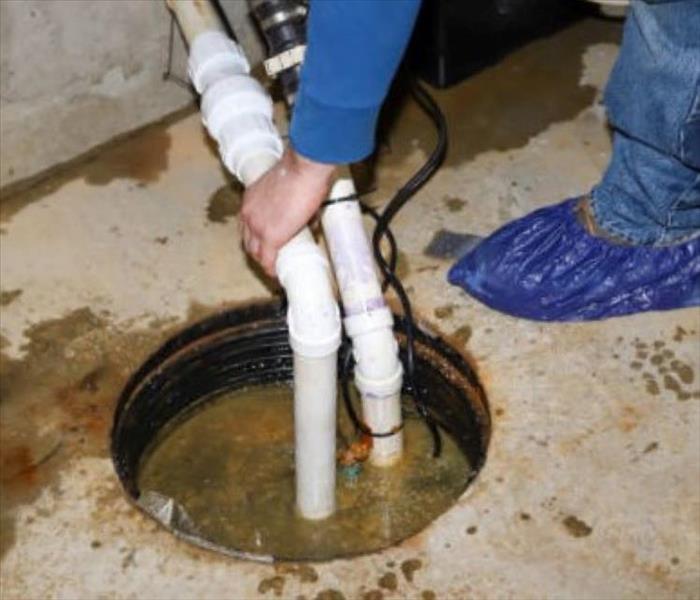 If your sump pump does fail and your basement is flooded, give us a call. SERVPRO of Washington, DC (202) 737-8776.
If your sump pump does fail and your basement is flooded, give us a call. SERVPRO of Washington, DC (202) 737-8776.
With late summer storms moving through the area, flooding is on the mind of many in the area. A sump pump can be a great way to avoid basement flooding.
A sump pump protects homes with basements and crawlspaces from damaging groundwater, directing the water into a pit where it's then pushed out and away from the house. This small but important addition to your home helps prevent your basement from flooding.
If the system ever fails or the power goes out, water overflow may occur. While your sump pump will usually protect you from a flooded basement, sometimes it is not enough or just fails altogether.
Make sure any landscaping around the foundation slopes away from the house.
Be prepared by having the proper insurance coverage in case your sump pump fails.
Install window well covers to keep rain from leaking in.
Clean your gutters and downspouts to keep them from clogging and overflowing.
Install a backup battery or generator in case you lose power.
Install a second sump pump if you live in an especially rainy area.
Install window well covers to keep rain from leaking in.
If your sump pump does fail and your basement is flooded, give us a call. SERVPRO of Washington, DC (202) 737-8776.
SERVPRO of Washington, DC is available 24 hours a day for water emergencies, large or small. When you are dealing with water damage, immediate action is important. A delay of just a few hours can greatly increase the severity of the water damage.
SERVPRO of Washington, DC is an IICRC firm. The Institute of Inspection, Cleaning and Restoration Certification (IICRC) creates the standards for the restoration industry and provides training and certification to restoration companies. IICRC Certified Firms have the right to display the IICRC Certified Logo.
If you have any questions about restoration and what we do call us SERVPRO of Washington, DC (202) 737-8776.
Warm Weather And Good Times Outdoors, What About Lightning?
8/12/2021 (Permalink)
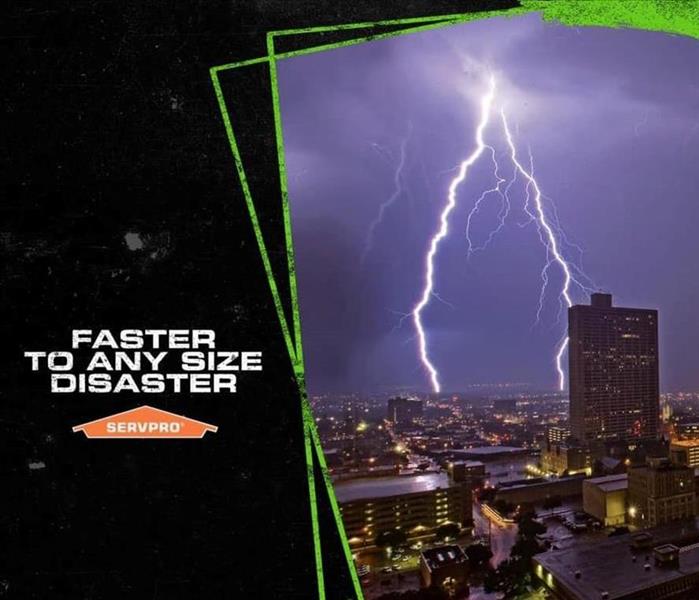 If you have storm damage call SERVPRO of Washington DC (202) 737-8776
If you have storm damage call SERVPRO of Washington DC (202) 737-8776
Lightning is hotter than the surface of the sun, it can reach temperatures around 50,000 degrees F. That is according to the National Weather Service. While we still have some good outdoor weather ahead, use caution.
Here are some outdoor activity guidance from The National Weather Service:
–Coach of Outdoor Sports Team
Your little league team has an evening game at the local recreational park. The weather forecast calls for partly cloudy skies, with a chance of thunderstorms by early evening. When you arrive at the park, you notice the only safe buildings are the restrooms.
Shortly after sunset, the sky gets cloudy and you see bright flashes in the sky. What should you do? Get everyone into vehicles or the restrooms. Do NOT stay in the dugouts; they are not safe during lightning activity. Once in a safe place, wait 30 minutes after the last rumble of thunder before resuming play.
–At the Beach or Lake
Your family plans to go to the beach today. The weather forecast calls for a nice morning followed by a 30 percent chance of afternoon thunderstorms. When you get to the beach, you see that the only nearby structures are open-sided picnic shelters.
The parking lot is a 5 minute walk from the beach. By early afternoon skies are darkening and hear distant thunder. What should you do? Go to your car! Do NOT seek shelter under the beach picnic shelters. Wait 30 minutes until after the last rumble of thunder before going back to the beach.
–Camping, Climbing and Other Wilderness Activities
You're cooking dinner on the camp stove when you hear distant rumbles of thunder. Your tent and a large open sided picnic shelter are nearby. Your vehicle is about quarter of a mile away parked at the trail head. What should you do?
Go to your vehicle! The tent and picnic shelter are NOT safe places. Wait 30 minutes until after the last rumble of thunder before going back to the campsite.
SERVPRO of Washington DC is locally owned and operated, we are able to respond quicker with the right resources, which is extremely important. A fast response lessens the damage, limits further damage, and reduces the restoration cost.
We specialize in storm and flood damage restoration. Our crews are highly trained and we use specialized equipment to restore your property to its pre-storm condition.
If you have storm damage call SERVPRO of Washington DC (202) 737-8776
Storms And Flooding Require Preparation And Planning
4/19/2021 (Permalink)
Floods are one of the most common and widespread natural disasters in the United States. FEMA reports, in the last 8 years, all 50 states have experienced floods or flash floods. As most of us have recently experienced, nearly 20% of all flood insurance claims come from moderate-to-low risk areas.
Here are a few Flood Facts provided by FEMA:
Flash floods can bring walls of water from 10 to 20 feet high.
Flooding can be caused by spring thawing (snow and frozen grounds melting in the spring), heavy rains, snow melt runoffs, flash floods, and mudflows.
Floods are the most widespread natural disaster aside from wildfires.
A 2,000 square foot home undergoing 12 feet of water damage could cost more than $50,000 to repair.
Here are a few supplies you need to prepare for a flood:
Stock up on First Aid items
Non-perishable foods
Three gallons of water per person for 3 days
Battery operated radio for weather reports
Extra batteries
Personal hygiene necessities
Flooding and water emergencies don’t wait for regular business hours and neither do we. SERVPRO of Washington DC provides emergency cleaning and restoration services 24 hours a day, 7 days a week, including all holidays.
Flooding and water damage is very invasive. Water quickly spreads throughout your home and gets absorbed into floors, walls, furniture, and more. SERVPRO of Washington DC arrives quickly and starts the water extraction process almost immediately. This immediate response helps to minimize the damage and the cleaning and restoration costs.
If flood water is not handled quickly and properly, it can jeopardize your health and safety, and cause severe damage to your home’s structure. Remember, the longer you wait, the worse the problem will get.
Give Us A Call, SERVPRO of Washington DC (202) 737-8776
The bottom line: a flooded basement can jeopardize your health, safety, and your home’s integrity. It’s worth making a call to SERVPRO of Washington DC (202) 737-8776 and let our trained, professional crews handle the situation safely and correctly.
Washington DC Saw Record Rainfall In 2020, SERVPRO of Washington DC Was There To Help
3/25/2021 (Permalink)
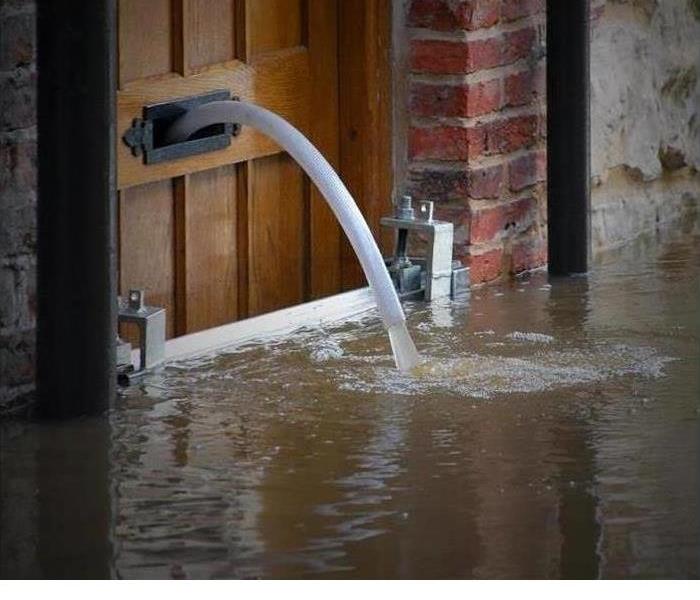 If your Washington DC basement ever looks like this, call SERVPRO of Washington DC (202) 737-8776
If your Washington DC basement ever looks like this, call SERVPRO of Washington DC (202) 737-8776
Washington DC saw less snow in 2020 but lots of rain
With records going back to 1871 the average rainfall for Washington DC is 39.74 inches a year. In 2020 Washington DC was recorded to have had 57.34 inches according to the National Weather Service. That is a lot of stormy weather and increased chances for flooding and water damage.
SERVPRO of Washington DC specializes in storm and flood damage restoration. Our crews are highly trained and we use specialized equipment to restore your property to its pre-storm condition.
When dealing with any type of water damage situation there are a few steps you can follow that will help you:
Do as thorough an assessment as possible of all property that has sustained damages from the event. Look behind appliances, lift up carpeting, check the crawl spaces, and make sure you are using a light source that allows you to see exactly what is going on.
If you find items that are damaged beyond repair or will not dry out properly, get rid of them immediately to avoid mold from taking hold.
Take pictures of all your findings, no matter how small. Once things dry out, you will have no evidence of what has happened, and that might create a challenge when attempting to recoup losses.
Using fans and dehumidifiers in enclosed spaces are an efficient way to alleviate damp and moist circumstances quickly and thoroughly before mold can set in.
Contact government officials if the damage comes from a city or county source, and give them as much information as you can. Stay onsite to walk them through your property if at all possible, and share pictures with them if they ask.
Get in touch with your homeowner’s insurance company and send them all the documentation and images that you have collected.
Be clear and precise, describing every instance of damage thoroughly and completely so that all records will be accurate.
Once all the information has been shared with the above entities, make arrangements to allow your property to dry out completely. Keep an eye open for mold colonies taking hold.
Since we are locally owned and operated, we are able to respond quicker with the right resources, which is extremely important. A fast response lessens the damage, limits further damage, and reduces the restoration cost.
Resources to Handle Floods and Storms
When storms hit Washington DC we can scale our resources to handle a large storm or flooding disaster.
Have Storm or Flood Damage? Call Us Today 202-737-8776
Don't Get Carried Away By Flooding
3/11/2021 (Permalink)
Read time: 1 min 20 sec
When looking for travel tips, you might have come across advice to avoid driving on a flooded path. This is more than just good advice; it will save your life and avoid expensive harm to your car. Here are some of the reasons not to drive on flooded highways.
Swept Away
Most of the flood deaths that occur in cars happen because the car driver misconstrued the depth of the floodwater. However, even a little bit of water can cause major problems on a flooded street. Here's what can happen at specific depths of water:
- 6 inches: Water up to 6 inches deep will cause your tires to lose traction on the ground. Your vehicle will skid when this happens. Although you're probably not drowning in this case, losing control of the vehicle may cause you to crash.
- 12 inches: a foot of water will cause small and medium-sized vehicles to float. If the water moves quickly, the vehicle can be swept away by the current—with you still inside.
- 24 inches: Even big pickups and SUVs can be washed away by two feet of water on a flooded street. Worse still, as the vehicle is being carried along, it may tip over, trapping you inside with the floodwater already rising.
Stranded at S(treet)ea
In most cars, the engine air intake is near the edge. Driving on flooded roads can lead to the sucking of water from the air intake into the engine, which can cause serious damage. Floodwater also poses a risk to the electrical components of your car, which may cause you to stall and stall in the middle of the flood. And if you and your car make it safely across the floodwaters, your vehicle will still have water damage that is likely to be costly to repair later.
When there is a flood around the city, prepare alternative routes and stay up to date with changing weather conditions. In general, it is best to stop driving on flooded roads if at all necessary.
4 Ways Floods Damage Impact Local Businesses
3/3/2021 (Permalink)
Floods damages repairs can be devastating to local company companies, and while insurance can cover some of the costs, there are some that are not recoverable.
Here are four ways that flood disasters can affect businesses.
1. Stock and asset losses
Floods damages may result in major losses, such as stock and other properties. Stock, equipment, appliances, and fittings, as well as important machinery, can be irreparably impaired. Businesses that can’t immediately replace these products will face significant financial losses. This means they will be unable to adequately operate and serve their customers.
2. Business Premises Closure
If companies hire unqualified restoration companies, they could close for weeks or months. This means cannot return to the premise and business owners will see a decrease in sales. Of course, since bills must always be charged, this can easily devastate funds or savings. Consider calling SERVPRO of Washington DC to help get your business back up and running.
Learn more about our Highly Trained Restoration Specialist
3. Loss of Power and Data
Aside from the damage that flooding can do to electrical equipment, an unreliable power supply during a flood can also cause serious destruction. Since most machinery and tools cannot function without electricity, this can result in significant losses. Businesses can lose data as a result of damaged computers and servers.
4. Loss of Revenue
During the wake of a storm, the vast majority of businesses would be forced to close their doors. This will result in a loss of sales for several days or weeks before the business is able to reopen. Employees could be unable to report to work for a variety of reasons, including imminent roadblocks, flooded highways, or even relocation. When you factor in the cost of replacing missing inventory, you're looking at a financial situation that could take months or even years to recover from.
Be Ready With the Emergency Ready Profile
11/11/2020 (Permalink)
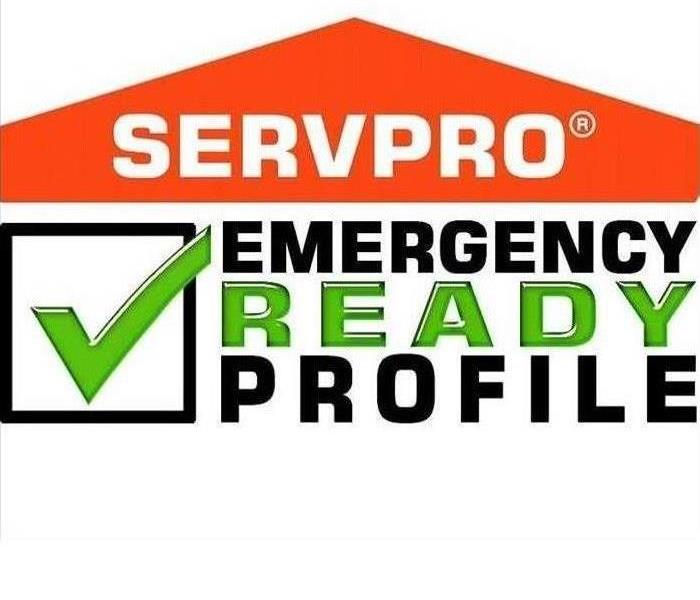 Emergency Ready Profile Logo
Emergency Ready Profile Logo
Preparation is key to making it through any size disaster, whether it is a small leak, pipe break or an area flood. The best time to plan for such water events is not when it happens, but before it happens. Facility owners and maintenance staff never plan on a disaster, but now you can plan for it by calling SERVPRO we can ensure you and your business are "Ready for whatever happens", with our Emergency Ready Profile (ERP).
The ERP is a comprehensive document containing critical information about your business, including:
- Emergency Contact Information
- Shut-off Valve locations
- Priority Areas
- Building layout
The ERP is also accessible online using your computer, tablet or smartphone.
For more information, visit https://ready.SERVPRO.com/home/readyprogram
Commercial Building Storm Damage
3/26/2020 (Permalink)
When preparing for an upcoming spring storm, protecting your home is the priority and something you should take seriously. As a business owner, you have to do double duty because it is crucial to ensure that your business is as secure as your home.
Here are a few ways to help you avoid storm damage to your commercial property:
1. Watch, Listen, or Read
By watching the local news channel, listening to the radio throughout your commute, or reading a weather app on your phone, you will know exactly what is coming your way as well as how to prepare for it.
2. Protect the Property
Be knowledgeable about where your pipes are located. With a quick visit to the hardware store, you can gather insulation supplies for the pipes that are easy to reach. Hate the drip, drip, drip from a leaky faucet? In the event of a cold front that brings freezing weather, turning the faucet on to a drip can help you avoid a potential serious and costly pipe break. This is because the drip keeps the water moving in the pipe and does not allow it to sit and freeze. When left alone, the water can freeze and expand, and this pressure is what will break a pipe.
3. Ask for Help
Utilize others’ knowledge on how to keep your business safe. Know who you can call to help prevent damage or to fix an already broken pipe. Save the phone number of a cleanup and restoration company in your phone contacts for quick reference in case of an emergency.
No one wants to deal with the headache of storm damage or a pipe break. By being prepared and creating a plan for your business, you can ease the burden of an upcoming winter storm. Your business storm strategy can also be easily applied to your home so that you won’t have to worry if a storm hits while you’re at work.
Do Not Succumb to a Storm’s Norm
3/12/2020 (Permalink)
Floodwaters are known for carrying mud and silt from the exterior of a home to the interior. Water removal is critical when limiting the damages to the first onslaught of storm waters. Minimizing non-salvageable materials to contaminated elements that can be demolished and discarded is challenging.
As you can see in the picture to the right, floods carried mud and silt from the exterior of this home and deposited it onto basement floors. The before and after picture above illustrates what a residency can look like after a storm’s floodwaters create water damage as well as after SERVPRO restores the property’s basement. If you have recently experienced a similar situation with water or storm damage, contact SERVPRO of Washington D.C. We will assist you in anyway we can to help you recover from a disaster like so.
While in 45 years of business, we have saved our clientele and their insurance companies from inconvenience, stress, and spending additional money. With the help of our team carefully planning an execution strategy, we always tailor our strategy towards the size of the cleanup, no matter what the damages may be, “Like it never even happened.”
When a Hurricane Knocks You Down, Get Boarded Up with SERVPRO Washington D.C.
3/5/2020 (Permalink)
Preparing for a potential disaster, such as a hurricane, is not as simple as it sounds; however, it is without a doubt something we should all consider for various safety reasons. Whether if there has been a recent fire, hurricane, or another structural damaging disaster, boarding up damaged property is a burden that no one should have to experience.
Fun Fact: When a slower moving hurricane, such as many of the hurricanes that make its way to the DC Metro area, can produce more rainfall and cause excess damage due to flooding than faster-moving and higher category hurricanes.
Boarding up damaged property incorrectly can cause secondary damages such as moisture or animal intrusion. The process of boarding up after an unexpected damage can also be as dangerous as the storm’s strength itself.
Our SERVPRO® Franchise professionals can board up your damaged property, mitigate, and remediate the original damage while providing you with peace of mind “Like it never even happened.”
Rain Rain Go Away
11/11/2019 (Permalink)
Its never a good time for it to be raining inside a building. A very in-depth work plan are developed quickly to get the water out and dry the interior. Industrial water extractors, desiccant humidifier, plenty of staff, and SERVPRO know how to get the job started quickly and correctly.Working around the clock, our staff and hundreds pieces of equipment work to get and business or school ready for the next day. What a sense of satisfaction it is to see a business or school open up on time due to the hard work of our SERVPRO employees along with the facility and staff of the community!! It show there is is no job to big or small for our team here at SERVPRO.
Removing Odors After a Flood
3/5/2019 (Permalink)
Removing Odors After a Flood
Flooding can cause a lot of damage, and air quality can be one of the biggest casualties of this type of disaster. You can pump water out of a flooded area, clean obvious mold growth and set up drying machinery, but it takes a lot of work to dry your commercial property of offensive odors. Here’s a look at the process used by experienced remediation contractors when working to restore a scent-free environment to buildings in the aftermath of a flood.
The Causes of Odors
Before addressing the problem, your contractor will first need to determine the cause of the offending scents. The most common reason for musty odors is excessive moisture that encourages mold growth , which is why it’s important to fully extract all fluids before rebuilding. Besides spores, there are a few other common causes of smelly conditions:
Bacteria growth in clean standing water
Black water from sewage loss
Chemical spills
The Deodorizing Process
Once the underlying causes of the odors have been identified, technicians will get to work deodorizing the entire area. After setting dehumidifiers up in the space, the workers will use appropriate chemicals to remove odor-causing spores so they won’t grow back. If the affected region is small enough, you might be able to handle it on your own, but anything larger than 10 square feet should probably be cleaned by a professional.
The Importance of Oder removal
In the wake of flooding, you want your employees and customers to think of your building as a safe place to visit, and musty odors from mold growth could work against you. The unpleasant scents that often follow after flood water recedes are an indication of a problem, but they can also be used to track down stubborn spores that would otherwise evade detection. By hiring a team of experienced remediation professionals to address these issues, you can get back to business with the flood’s destruction safely in your rear-view mirror
Equipment Used in Basement Water Removal
3/5/2019 (Permalink)
Equipment Used in Basement Water Removal
There’s nothing worse than waking up in the morning and taking a trip down to the basement only to find out that it’s filled with two feet of water. Whether it’s rain water or a broken pipe, the result is the same: Your basement, is flooded. The next questions that you probably have are how do you get rid of the water and what equipment can you use. The first thing you should do is look for an expert who can help you out with the following equipment used for deep water removal:
Truck
Most home restoration experts use a truck to carry their equipment. A sump pump or trash pump may be mounted to the vehicle.
Sump Pump
This type of pump is used for simple water removal. If a pipe breaks or your basement floods with water, an expert may use this kind of pump to remove it. These pumps are designed for the following:
• The removal of water
• Draining a flooded basement
• Not generally used for water containing large debris
Trash Pump
A trash pump is similar to a sump pump in that they are both centrifugal pumps. However, this type of pump can be used to pass solids in the volume of water. This can help when you have gray or black water filled with sludge or twigs. Typically when a sewer backup or a flood from a storm enters your basement, there is going to be a lot of debris in the water. In this case, a trash pump may be the right kind of equipment for your situation.
At the end of the day, you should never leave standing water in your home. When it comes to water removal, oftentimes sump or trash pumps are the equipment that specialists employ to take care of the flooding problem and dry out your dwelling.
Disasters Happen
9/24/2018 (Permalink)
As a business owner, insurer or property manager, you are a leader in your community and have the opportunity to set an example for your employees, customers and community to follow.
This year for National Preparedness Month, join your community in preparing for emergencies and disasters of all types, and leading efforts to encourage the community as a whole to become more prepared. “Disasters happen” and not only devastate individuals and neighborhoods, but entire communities, including businesses of all sizes.
As an employer in your community, having a business continuity plan can help protect your company, its employees and its infrastructure, and maximizes your chances of recovery after an emergency or disaster. You can do this by taking three simple steps:
- Plan to stay in business
- Encourage your employees to become ready
- Protect your investment
We must work together as a team to ensure that our families, businesses, places of worship and neighborhoods are ready. At Ready.gov/business, companies can find vital information on how to begin preparing their organization and addressing their unique needs during an emergency.
Storm Damage
9/4/2018 (Permalink)
Storms happen quickly and if your business experiences storm damage we know your recovery must happen even quicker. Even the biggest commercial building seems small in a storm and can experience damage as easily as a home.
No matter how big the storm, SERVPRO Washington DC can provide a quick and safe clean up. We’ve cleaned messes like standing water in multi-floor buildings and are equipped to handle the cleanup your business needs.
We work with you every step of the way and do our best to work with little interruption to your normal schedule. With our service on call 24/7 we can have your business open by lunch time the next day. Storms may be big, but no amount of damage is too big your SERVPRO of Washington DC
We Answer the Phone Ready to Help 202-737-8776
SEPTEMBER IS NATIONAL PREPAREDNESS MONTH
5/21/2018 (Permalink)
Different types of disasters and emergencies happen in communities across the country, but there are key steps that every household can take to be better prepared for them. If you do nothing else this month, take time to create a disaster plan including an emergency escape plan.
Make a clear plan of what to do in an emergency and in case of an evacuation.
Identify clear roles for everyone in the house.
Discuss how to prepare and respond to emergencies that can happen at home, work, and school.
Make a list of all the important things you may forget when in an emergency.
Have a disaster kit assembled for everyone in the house.
Have an out of the area emergency contact person saved on a smartphone.
Practice evacuating your home twice a year, especially if you have kids or pets. This makes it a routine and can make a real emergency situation less stressful.
According to the Red Cross there are many disaster apps now available for smartphones and tablets that can be downloaded to help with emergencies. Some of these apps include a full emergency app, tornado, hurricane, earthquake, wildfire and flood apps. If any of these disasters are common in your areas I would recommend downloading the corresponding app. With these apps you can know when to evacuate, where a shelter may be located, and exactly where the disaster occurred.
Go to: http://www.redcross.org/get-help/prepare-for-emergencies/mobile-apps for more information
Back To School Home Safety
9/7/2017 (Permalink)
As we are nearing the end of August, and parents are enjoying their last few days before school we can only think of the many safety tips that parents should consider around the house.
In the Kitchen:
-Are knives, forks, scissors, and other sharp tools in a drawer with a childproof latch?
-Are glass objects and appliances with sharp blades stored out of reach?
-Are matches and lighters stored in a locked cabinet
In Bedrooms:
-Are window blind and curtain cords tied with clothespins or specially designed cord clips?
-Is there a smoke alarm outside the bedroom?
In Bathrooms:
-Are razor blades, nail scissors, and other sharp tools stored in a locked cabinet?
-Are all medication bottles, loose pills, coins, scissors, and any other small or sharp objects out of reach?
- Are all bleaches, detergents, and any other cleaning products out of reach?
Electrical:
-Have you checked for and removed other potential electrical fire hazards, such as overloaded electrical sockets and electrical wires running under carpets?
-Are all unused outlets covered with safety plugs?
Hurricanes
9/6/2017 (Permalink)
Hurricanes are some of the most violent storms on Earth. ...
Tropical cyclones are like giant engines that use warm, moist air as fuel. That is why they form only over warm ocean waters near the equator. The warm, moist air over the ocean rises upward from near the surface.
Air from surrounding areas with higher air pressure pushes in to the low pressure area. Then that "new" air becomes warm and moist and rises, too. As the warm air continues to rise, the surrounding air swirls in to take its place. As the warmed, moist air rises and cools off, the water in the air forms clouds. The whole system of clouds and wind spins and grows, fed by the ocean's heat and water evaporating from the surface.
Storms that form north of the equator spin counterclockwise. Storms south of the equator spin clockwise. This difference is because of Earth's rotation on its axis.
As the storm system rotates faster and faster, an eye forms in the center. It is very calm and clear in the eye, with very low air pressure. Higher pressure air from above flows down into the eye.
To learn more go to :
https://spaceplace.nasa.gov/hurricanes/en/
Be Storm Smart. Be Storm Ready.
8/25/2017 (Permalink)
Sever weather can happen any time, and anywhere. Each year, Americans cope with an average of the following intense storms*:
· 10,000 severe thunderstorms
· 5,000 floods or flash floods
· 1,000 tornadoes
· 2 land falling, deadly hurricanes
Approximately 98 percent of all presidentially declared disasters are weather-related, leading to around 500 deaths per year and nearly $15 billion in damage.* Knowing your risk of severe weather, taking action and being an example are just a few steps you can take to be better prepared to save your life and assist in saving the lives of others.
Know Your Risk. The first step to becoming weather-ready is to understand the type of hazardous weather that can affect where you live and work, and how the weather could impact you, your business and your family. Check the weather forecast regularly, obtain a NOAA Weather Radio, and learn about Wireless Emergency Alerts. Severe weather comes in many forms and your shelter plan should include all types of local hazards.
Take Action. Take the next step in severe weather preparedness by creating a communications plan for your home or business. Put together or purchase an emergency kit. Keep important papers and valuables in a safe place.
Be an Example. Once you have taken action to prepare for severe weather, share your story with co-workers and family and friends on Facebook or Twitter. Your preparedness story will inspire others to do the same.
*Facts provided by http://www.stormready.noaa.gov.
Build An Emergency Checklist
8/25/2017 (Permalink)
· Water (one gallon per person per day)
· Food (non-perishable 3-day supply)
· Manual can opener
· Battery operated radio, preferably a NOAA Weather Radio
· Flashlight and extra batteries
· First aid kit
· Whistle to signal for help
· Clothing
· Dust masks or bandanas
· Plastic sheeting, garbage bags and duct tape
· Wrench or pliers to turn off utilities
· Hygiene items
· Important documents; copies of insurance policies, identification and bank account information
· Cash
· Fire extinguisher
· Matches in a waterproof container
SERVPRO of Washington, DC is locally owned and operated—so we’re a part of this community too. We are also part of a national network of over 1,700 Franchises, which enables us to respond quicker with more resources. For major storms and disasters, we can call upon special Disaster Recovery Teams strategically located throughout the country.





 24/7 Emergency Service
24/7 Emergency Service






